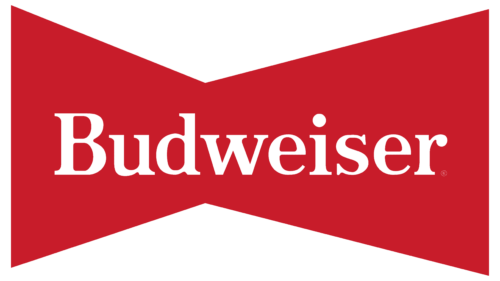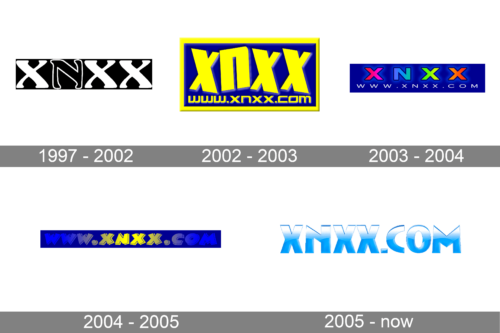
- Version
- Download 86
- File Size 16.12 KB
- File Count 1
- Create Date December 10, 2024
- Last Updated December 10, 2024
Budweiser, often referred to as The King of Beers, is a renowned American lager introduced in 1876. Produced by AB InBev, it has grown into one of the world’s leading beer brands. Its logo has undergone several redesigns over the years, adapting to modern trends while maintaining its heritage.
Logo Evolution
- 1876 – 1910:
- The first logo was a rectangular badge with cursive lettering, featuring "Budweiser Lager Beer" at the top. The logo also included an ornate red coat of arms and two wide ribbons, giving it a traditional and elegant feel.
- 1910 – 1945:
- The color palette shifted to red, blue, and white. The cursive wordmark was now placed inside a scarlet red rectangle, with the coat of arms and ribbons above it.
- 1936 – 1947:
- This version adopted a circular form, with a bold script font for “Budweiser” at the center. A stylized bird-wing motif symbolized freedom, complemented by a coat of arms featuring an eagle and the regal “A,” highlighting the brand’s American heritage.
- 1945 – 1987:
- The logo was refined with vertical orientation and a serif font. The design featured additional thin cursive lettering with curves and flourishes for a more sophisticated look.
- 1947 – 1948:
- The logo prominently featured the words “We Feature” atop the design, along with a crowned “A” and the phrase “It Lives With Good Taste.” This version emphasized quality and authenticity, featuring warm red and orange hues.
- 1948 – 1952:
- A round design showed two hands toasting with Budweiser glasses, framed by a red laurel wreath, evoking celebration and victory. “Anheuser-Busch St. Louis, MO” was included to reinforce the brand’s origin.
- 1952 – 1955:
- The logo adopted a minimalist, modern design with bold white lettering on a red geometric figure. A black outline framed the design, and the tagline "King of Beers" was placed beneath.
- 1955 – 1957:
- The wordmark “Budweiser” was written in bold red letters with the “King of Beers” tagline underneath. The logo was enclosed within a silver rectangular frame, featuring a geometric background with colorful accents.
- 1957 – 1961:
- The iconic red bow-tie made its first appearance inside a white rectangle. The wordmark was white, and the Anheuser-Busch symbol was placed on the white portion of the logo.
- 1961 – 1963:
- The logo featured a red bow-tie with a white wordmark, placed against a white background with thin egg-like contours in blue and gold, offering a playful yet refined look.
- 1963 – 1968:
- The bold serif wordmark appeared in red, purple, and green without any graphic elements, making it colorful and welcoming.
- 1968 – 1987:
- The bow-tie returned in a simple red-and-white design, with the wordmark placed in white against a red background. This minimalist logo remained unchanged for almost 20 years.
- 1987 – 1999:
- The logo became predominantly red, with “Budweiser” written in bold blue letters. It included intricate designs such as a crown, hop leaves, and a shield emblem, along with the tagline “WORLD’S LARGEST SELLING BEER”.
- 1987 – 1994:
- The bow-tie was refined with thin black shadows, and the italicized wordmark gained more elegance and progressive appeal.
- 1994 – 1999:
- This version returned to a flat design with the red bow-tie and white wordmark. A tagline “Biere. Beer” appeared beneath it.
- 1996 – 1999:
- A new emblem was introduced resembling an aviation badge. The logo featured a bold italicized serif typeface with a rounded "R" but was used for only three years.
- 1997 – 1999:
- This modern minimalist design combined geometric shapes and symmetry, giving the logo a sleek and professional look.
- 1999 – Today:
- The red bow-tie and white cursive lettering became synonymous with the brand. The crown symbolized the “King of Beers”, reinforcing the brand’s premium image.
- 1999 – 2010:
- The logo continued to feature the red bow-tie with white lettering, and the iconic gold crown symbolizing its royal status.
- 2011 – 2016:
- The logo was refined, featuring a red bow-tie, white wordmark, and the gold crown. The outline color changed from red to white in 2011, adding a contemporary touch.
- 2016 – Today:
- The current version of the logo is a simplified design with flat two-color (red and white). It remains modern and sleek, retaining the classic cursive typeface.
- 2023 – Today (USA):
- A more minimalistic design was introduced in 2023 for the U.S. market. The serif lettering is now in dark red with the iconic gold crown above it. The transparent background adds to the elegant simplicity of the design.
Symbolism and Meaning
- Red Bow-Tie: The red bow-tie is now a symbolic and iconic element of the Budweiser brand. It represents the beer’s premium status, combining elegance with boldness.
- Crown: The crown above the wordmark reinforces the "King of Beers" tagline, emphasizing Budweiser’s dominance and legacy in the beer industry.
- Cursive Wordmark: The cursive font reflects the brand’s heritage and craftsmanship, while the flowing letters suggest the smooth and premium quality of the beer.
- Red and Gold: Red symbolizes passion, energy, and strength, while gold conveys premium quality and royalty, reinforcing Budweiser’s position as a high-status brand.
The Budweiser logo has evolved from ornate, traditional designs to a modern, minimalist aesthetic. Despite numerous changes, the core elements—the red bow-tie, crown, and cursive lettering—have remained central, reflecting the brand's rich heritage and premium status as The King of Beers. The logo continues to be a timeless symbol of Budweiser’s legacy and commitment to quality.
| File | Action |
|---|---|
| Budweiser Logo.png | Download |








